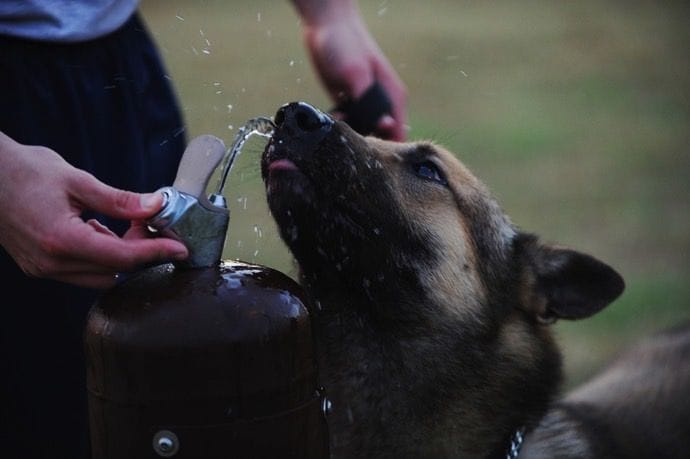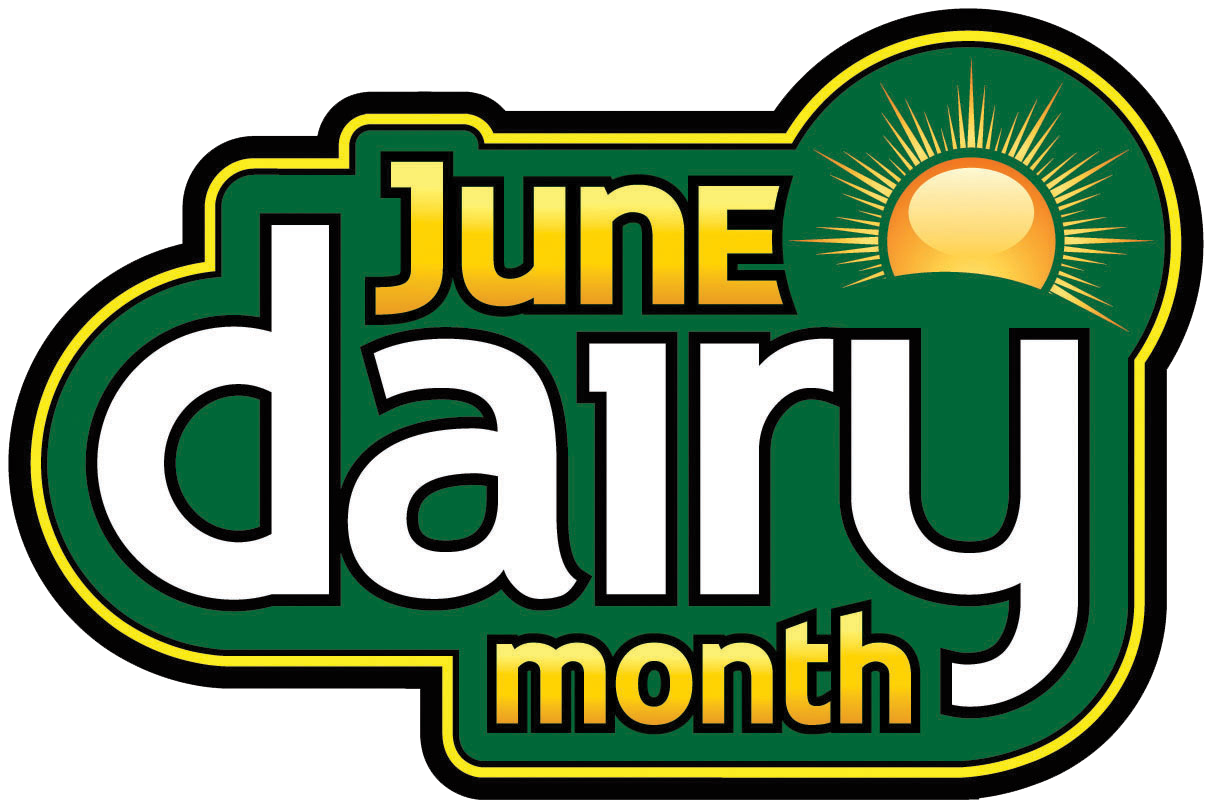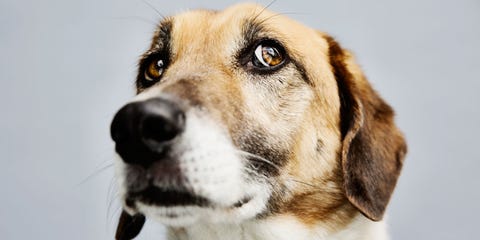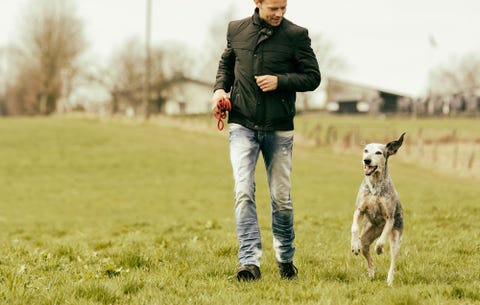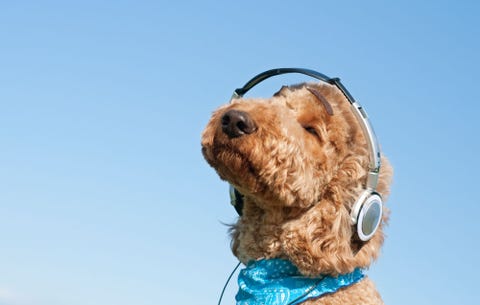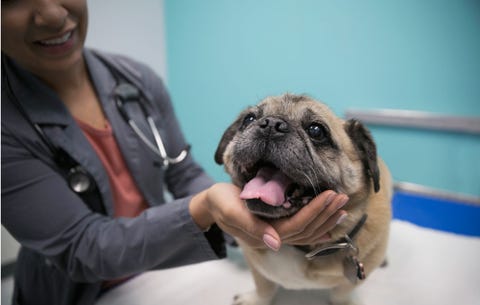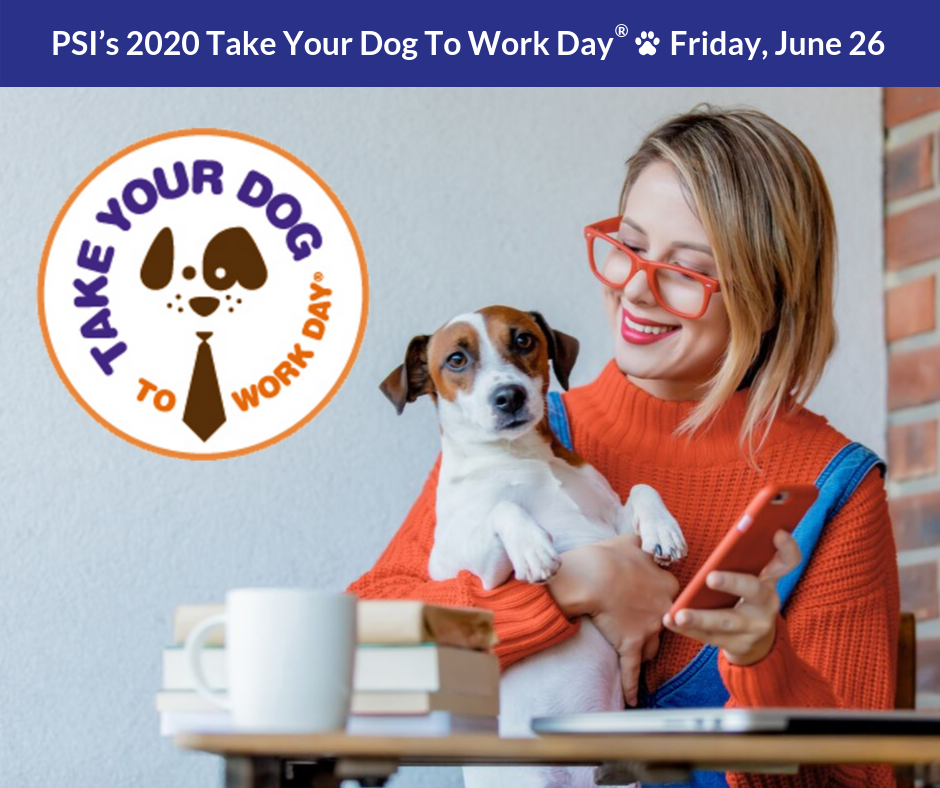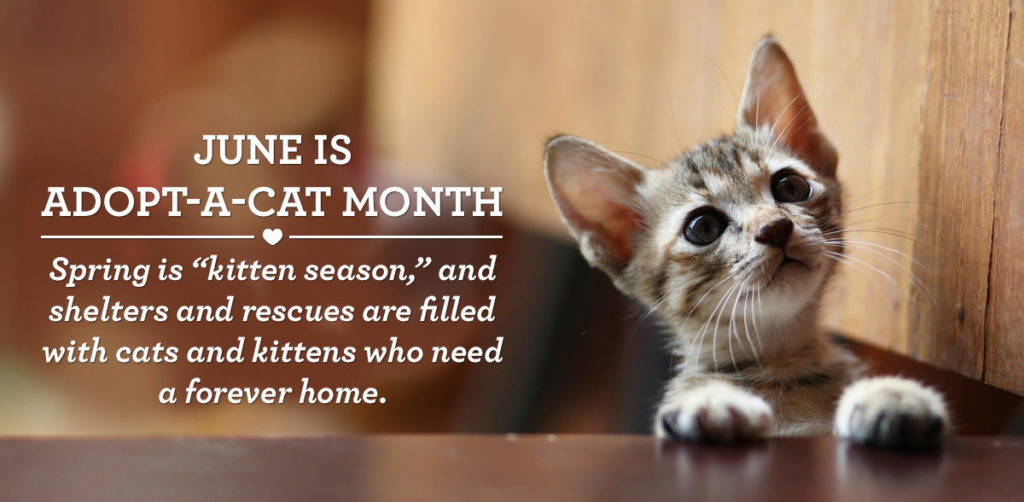Why did my dog develop a Cataract?
Cataracts have many causes in dogs, and sometimes it is not possible to identify the cause of cataracts in affected patients.
- Most cataracts in dogs are inherited and can occur at any age. The cataract may develop rapidly over weeks, or slowly over years, and occur in one or both eyes. Different breeds of dogs have different characteristics of cataract development. For example, cataracts in Bichon Frise dogs tend to develop rapidly in early adulthood and usually involve the entire lens in both eyes. Mixed-breed dogs can also develop inherited cataracts.
- The second-most common cause of cataracts in dogs is diabetes (diabetes mellitus). 75% of diabetic dogs will develop blinding cataracts within the first nine months of being diabetic. Often, the cataracts form very shortly after the dog becomes diabetic. See the accompanying article, Cataracts, Blindness, and Diabetic Dogs. Diabetic cataracts develop VERY fast—often overnight—in dogs, and they are a medical and surgical emergency. NOTE: Did you know that if a diabetic dog is supplemented daily with a specific canine antioxidant vision supplement (see our Veterinary Supplements page) BEFORE diabetic cataracts form, that this can help prevent blinding diabetic cataracts from forming?
- The third most common cause of cataracts in dogs is a toxic reaction in the lens—the lens is “sick”, due to some other ocular disease or (much less commonly) due to a drug reaction. These are called “toxic cataracts”. Toxic cataracts caused by ocular disease are quite common in dogs, and are caused by: 1) retinal degeneration, especially Progressive Retinal Atrophy (PRA)—see Progressive Retinal Atrophy (PRA) in Dogs; 2) uveitis (intraocular inflammation) of any cause, including trauma; and 3) secondary to glaucoma (increased intraocular pressure) of any cause—see Glaucoma.
- A special type of cataract occurs in dogs in which the lens capsule is ruptured due to trauma. The trauma can be penetrating (such as a cat claw injury or pellet gun injury) or a severe blow to the eye that results in lens capsular rupture. The lens contents leak out through the hole in the capsule and cause both cataract and a severe immune-mediated reactive uveitis; the uveitis does not usually “peak” in severity until 2–3 weeks AFTER the injury occurred. It is not always apparent that the lens capsule has ruptured; often, by the time this is diagnosed it is too late to save the eye and the eye needs to be removed. Thus, it is prudent to seek immediate medical attention for ANY injury to your dog’s eye. Lens capsules can also rupture if the lens swells, causing the capsule to stretch and split open. NOTE: This can also happen in diabetic dogs and in some types of inherited cataracts that rapidly form.
- Cataracts can also develop due to nutritional deficiencies in dogs, such as puppies on an artificial milk-replacer diet. These are called nutritional cataracts, and they often will improve as the puppy matures.
- Dogs also can develop cataracts with age (often after 8 years of life). However, age-related cataracts in dogs are usually small and do not significantly interfere with vision.
- There are many other potential causes of cataracts in dogs, such as birth defects, infection, radiation (usually from prolonged radiation therapy for cancer of the head), etc. but discussion of these causes is beyond the scope of this review article.
How are Cataracts treated?
However, nutritional support of the lens can help to prevent or lessen the severity of developing cataracts. Nutritional supplementation can help to enhance lens health by providing oral antioxidants designed specifically for support of the canine eye. Antioxidant supplementation may also help reduce ocular inflammation that occurs in dogs both secondary to cataract formation and following cataract surgery (see our
Veterinary Supplements page).Once a lens has developed a cataract, there is no known method to make the lens clear again. Immature, mature, and hypermature cataracts can be treated by surgically removing them.
It is important to understand that no cataract can be reversed; once the lens is cloudy, it stays that way unless cataract surgery is performed to remove it. Two exceptions to this rule are: 1) some nutritional cataracts can improve over time; and 2) hypermature cataracts can develop clear zones over time. However, as this process occurs in hypermature cataracts, damage to the eye also occurs in the form of lens-induced inflammation (called lens-induced uveitis or LIU). LIU, in turn, can cause glaucoma, retinal detachment, and/or lens luxation (slippage of the lens from its attachments, allowing the lens to float around inside the eye and cause damage and pain).
Cataract surgery is one of the most common surgeries performed on humans. However, not all dogs with cataracts need or should have cataract surgery. In fact, most dogs with cataracts do not need surgery, because most lens opacities in dogs (and a lens opacity is a cataract, no matter how tiny or big) are small and don’t significantly interfere with vision. Just because a dog’s eye has a cataract does not mean that the dog must undergo cataract surgery. Only a veterinary ophthalmologist can determine if cataract surgery is indicated in an affected patient.
Cataract surgery is a quality of life surgery—not a life-saving surgery. The ophthalmologist must evaluate many criteria before determining if a dog can or should undergo cataract surgery. However, it is also true (in Dr. McCalla’s view) that restoring a blind dog’s vision with cataract surgery is one of the most satisfying parts of being a veterinary ophthalmologist, and surgery can give a dog a wonderful new lease on life. For a blind dog to again be able to see its owner, to play with toys, look out the window and actually see things—this is life-changing for canine patients and their owners. This is especially true if the dog is elderly and deaf or hard of hearing, and/or has senile dementia and cognitive issues—to have its vision restored can make a huge difference in its quality of life.
The procedures and equipment used to remove cataracts in dogs are the same as those used in humans, and this equipment is highly technical and very expensive. The two most costly instruments used are an operating microscope and a phacoemulsification machine. A small incision is made in the eye and a hole is made in the capsular bag that holds the lens. Phacoemulsification is then performed, in which a special probe ultrasonically emulsifies and removes the cataract (all of the lens contents inside the capsule). After the cloudy lens is removed, the empty lens capsule remains and is called the capsular bag. An artificial replacement lens, called an intraocular lens or IOL, is placed in the bag. The eye is closed with extremely small absorbable sutures. IOLs are either rigid polymer plastic lenses or soft foldable lenses. The choice of which type of IOL to place inside an eye during surgery is determined by the ophthalmologist. Because even the slightest damage to structures in the canine eye can have disastrous effects, cataract surgery is extremely delicate surgery and is performed under general anesthesia with high-magnification using an operating microscope. If both eyes are affected, usually both eyes are operated on at the same time—especially in diabetic dogs.
How well will my dog see after Cataract surgery?
After successful cataract surgery dogs see close to normal. However, we cannot give dogs perfect vision. This is because an exact replacement of the original living lens is not possible. Furthermore, dogs have more inflammation in their eyes after surgery than humans and therefore have more scarring. This scarring does slightly decrease vision. The post-operative inflammation and scarring (lens capsular opacification) may be lessened by both anti-inflammatory drugs and oral antioxidant supplementation. Capsular opacification is especially a concern in puppies and young adult dogs, and the best way to help reduce the risk of opacification is to implant an IOL, control uveitis, and provide daily antioxidant supplementation. A unique canine antioxidant vision supplement contains ingredients that work synergistically to help reduce the risk of opacification. Once the capsule develops opacities, they cannot be medically reversed. In people, capsular opacities that develop following cataract surgery can be lessened with laser surgery, but this does not work in dogs. Most owners notice a tremendous increase in their pet’s vision after cataract surgery, but they can still detect certain visual difficulties.
After surgery, cataracts cannot recur. However, some dogs can have decreased vision years after cataract surgery due to formed scar tissue, glaucoma, and/or retinal detachment. In rare instances, placement of an IOL is not possible at the time of cataract surgery. These dogs still see better, but are more far-sighted and near objects are out of focus. The cornea does two thirds of the focusing of the eye, so vision is still present but not perfect if the lens (which does one-third of the focusing) cannot be replaced with an IOL. Some dogs require anti-inflammatory medication for several weeks, months, or lifetime following cataract surgery. Following cataract surgery, lifetime supplementation with a specific canine antioxidant vision supplement may help reduce the risk of capsular opacification, secondary glaucoma, and/or retinal detachment forming (see our
Veterinary Supplements page).
Why is Cataract surgery so expensive?
Cataract surgery is expensive because it requires specialized equipment and training. The instruments and equipment used for cataract surgery in dogs are the same type used for cataract surgery in people. Furthermore, you are paying for the highly advanced training and expertise of a board-certified veterinary ophthalmologist.
When people undergo cataract surgery, they usually pay very little for it because insurance picks up most of the tab of the surgeon’s fee, facility fee, and anesthesia/sedation fee. This is not the case in veterinary medicine. The pet owner pays 100% of the cost of cataract surgery and other health care for their pet. Even pet health insurance policies often exclude cataract surgery, because the cataracts are often genetic and most insurance companies will not cover genetic or pre-existing conditions. If you have health insurance for your dog, do not assume it will cover cataract surgery—check with your insurance provider.
What if Cataract surgery is not done?
Immature, mature, and hypermature cataracts can cause a serious reactive inflammation inside the eye (Lens Induced Uveitis, or LIU) that must be medically treated, whether or not surgery is performed. LIU can lead to complications such as glaucoma or a detached retina whether or not cataract surgery is performed, and LIU decreases the success rate of cataract surgery. An additional potential complication in eyes not undergoing surgery is lens luxation, which can be quite painful depending on how the lens slips (luxates) out of position. Glaucoma is also painful, in the form of a headache. Cataract surgery is an elective procedure. If surgery is not performed, lifetime anti-inflammatory eye drops and lifetime supplementation with a specific canine antioxidant vision supplement are required by Dr. McCalla, as well as lifetime eye re-examinations. There is a best window of time in which to perform surgery. The earlier the cataract can be removed, the better. If you first decide to not have surgery performed but change your mind later, it is quite possible that surgery cannot be performed at a later date due to the decreasing surgical success rate over time.
If cataract surgery is not done, your dog might do just fine. However, it might not; the worst-case scenarios that could occur are that the dog eventually develops glaucoma secondary to LIU (which is chronically painful in the form of a headache), or develops extremely painful lens luxation. If these conditions cannot be controlled medically (and lens luxation usually cannot be medically controlled, especially if the lens luxates into the anterior chamber of the eye), then surgery is needed; either removal of the eye, or removal of the luxated lens if there is a hope of vision. There are other surgical choices for blind glaucomatous eyes (see
Glaucoma).
It is also important to understand that most dogs that are blinded from cataracts can adequately adjust to their vision loss, if they are in a safe and stable environment and their eyes are not painful. You cannot determine if your dog’s eyes are painful from cataract development—if your dog has developed secondary glaucoma, it has a headache but will not show this in any obvious way, until it is too late. By that time, the affect eye is enlarged and completely blind due to destruction of the optic nerve. When this occurs, medication usually is not adequate to control the increased intraocular pressure, and surgery is needed to relieve the pain.
If your dog has cataracts but you believe that you cannot afford surgery, it is still VERY important for you to have your dog evaluated by a veterinary ophthalmologist! This is because medical treatment of the affected eye(s) is almost always needed to help prevent complications arising from the presence of the cataract. The cataract causes LIU, which in turn can cause many serious complications and the complete loss of the eye (including possible surgical removal of the affected eye).
The first step is to have your pet examined by Dr. Terri McCalla at Animal Eye Care to determine if your pet is a good candidate for surgery. A preoperative blood profile (including serum triglyceride testing; for nondiabetic dogs, the blood is drawn after the dog has been off food for 10–12 hours. For diabetic dogs, the blood is drawn shortly before the morning or evening meal to mimic a fasting blood sample), comprehensive physical exam, and assessment of anesthetic level of risk are then performed by your family veterinarian. If your pet “passes” these tests, some patients require electroretinography (ERG) and gonioscopy testing at our hospital. These are performed under sedation, and cause no discomfort. ERG testing evaluates retinal function, as it is vital that the retina (the “film in the camera”) is working, in order to perform cataract surgery. Gonioscopy evaluates the drainage angle of the eye to determine if the eye(s) are at increased genetic risk of developing glaucoma postoperatively. If they are, additional medications will be prescribed and these medications may be needed for your pet’s lifetime. Ultrasonography of the eye(s) is often required prior to cataract surgery, to determine if retinal detachment is present. This test is performed at a nearby veterinary specialty hospital. Many patients require ultrasonography and not ERG testing, and some patients require neither test.What is involved in having Cataract surgery performed on my dog?
If your dog “passes” the ultrasound and/or ERG tests, surgery can be scheduled. The eyes require intense topical medication immediately preceding the surgery day. Dr. McCalla also prescribes special oral antioxidant supplementation prior to surgery, that is then
given for the rest of your pet’s life (see our
Veterinary Supplements page). On the day of surgery, your pet will need to arrive at the hospital early in the morning to receive intensive eye treatment before surgery. The surgery is performed and your pet goes home the same day. Your pet will not have eye patches. Your pet must wear a harness after surgery when being walked. Attach the leash to the harness and NOT to a neck collar, as this could place pressure on the jugular veins, causing increased eye pressure.
Vision usually improves during the first week after surgery—often within 24 hours—but the return of functional vision sometimes takes up to 2–3 weeks. Most dogs exhibit minimal to no pain after surgery. Your pet will require oral medication and two or three different kinds of eye drops 3 to 4 times a day for the first few weeks after surgery, and on a lesser frequency for several months post surgery. Your pet MUST wear a cone-shaped restraint collar (E collar) the first 2 weeks after surgery to prevent self-trauma to the eyes. You MUST also bring your pet for reexaminations at 1 day, 5 to 7 days, 2 to 3 weeks, 8 to 10 weeks, and 4 to 6 months post surgery, and every 6 to 12 months thereafter. This reexamination schedule may change if there are post-operative complications.
What are the risks involved with Cataract surgery?
Cataract surgery is a highly successful procedure, but there are risks. Chances of the patient having improved vision after surgery are high for most dogs (90%–95%). But 5% to 10% of dogs will not regain good vision due to complications, and (worst case scenario) may actually be permanently blind in one or both of the operated eyes. Because of species differences in how reactive eyes are to cataracts, inflammation, and to intraocular surgery, cataract surgery is not as successful in dogs (or other domestic species) as it is in humans and other primates. Additionally, it must be kept in mind that no surgery on any species can be guaranteed to be successful.
If your dog has significant LIU (most commonly caused by a hypermature cataract or a rapidly-developing cataract), this also decreases the success rate. LIU is the primary reason that the sooner that cataract surgery can be done, the better.
- The risk of intraocular scar tissue. All dogs develop some intraocular scar tissue (primarily opacities of the lens capsule). Excessive scar tissue will limit vision. Puppies and young adult dogs develop more capsular opacities than older dogs. Anti-inflammatory medication and lifetime support with a specific canine antioxidant vision supplement may help reduce the formation of severe capsular opacities.
- The risk of glaucoma. Glaucoma (increase in eye pressure) occurs transiently in 30% of dogs that have cataract surgery, usually within the first 24 hours after surgery. This is not as bad as it sounds; most of the time, these pressure increases are temporary and quickly resolve with treatment within the first 1–2 days after surgery. However, glaucoma can also occur later—months to years following surgery. Glaucoma not only can cause complete vision loss, but also may require the need for additional medications or surgery. It can be painful (in the form of a headache) and cause LOSS OF THE EYE if uncontrolled.
- The risk of retinal detachment. While surgical re-attachment of the retina is sometimes possible, the success rate can be low and this complication usually results in complete vision loss. However, if it is caught early the surgical success rate is much higher.
- The risk of intraocular Infection. While this is rare, it can cause complete vision loss as well as LOSS OF THE EYE (i.e. surgical removal of the eye).
- The risk of general anesthesia. Anesthesia safety has progressed tremendously during the last 5 years. However, even healthy pets CAN DIE UNDER GENERAL ANESTHESIA. We take anesthesia very seriously. All patients are monitored extensively by our surgical team. All patients receive electronically assisted ventilation and monitoring of their blood oxygenation, carbon dioxide levels, respiration, temperature, heart function, and blood pressure. See Anesthesia Section
How can the risk of developing postoperative complications be reduced for your dog?
By following these recommendations:
- Having your dog’s eyes examined by a veterinary ophthalmologist as soon as cataracts are suspected (especially if your dog is diabetic), and NOT waiting until the lens is completely opaque and the eye is blind. Sometimes general veterinary practitioners advise waiting—It is best NOT to wait!
- Following all treatment directions correctly and faithfully.
- Bringing your dog to all recommended postoperative reexaminations by your ophthalmologist. Regular postoperative reexaminations by the ophthalmologist, for the rest of the dog’s life, are needed. Sadly, veterinary ophthalmologists often see cataract patients in trouble, that are several months to years overdue for their eye appointments. The dogs usually have developed irreversible blindness from glaucoma and the eye(s) are lost.
- Lifetime postoperative support with a specific canine antioxidant vision supplement (see our Veterinary Supplements page)
- Calling your ophthalmologist’s office if you suspect ANY change has occurred in your dog’s eye(s).
- Always using a harness to walk your dog; do not attach the leash to a neck collar.
Successful cataract surgery depends on a great team effort over the lifespan of your dog—a willing patient (your dog must allow itself to be treated with both oral and topical medication, and must allow its eyes to be examined by an ophthalmologist. If your dog is a land shark, we will not even get to first base in order to examine it!), a dedicated owner who can follow treatment instructions and bring the patient for all scheduled ophthalmic examinations AND call our office if they have any concerns, a dedicated ophthalmologist and staff who are available when you need them, and a dedicated family veterinarian who is able to refer your dog to an ophthalmologist and work with you and the ophthalmologist to ensure that your dog is as healthy as possible.
